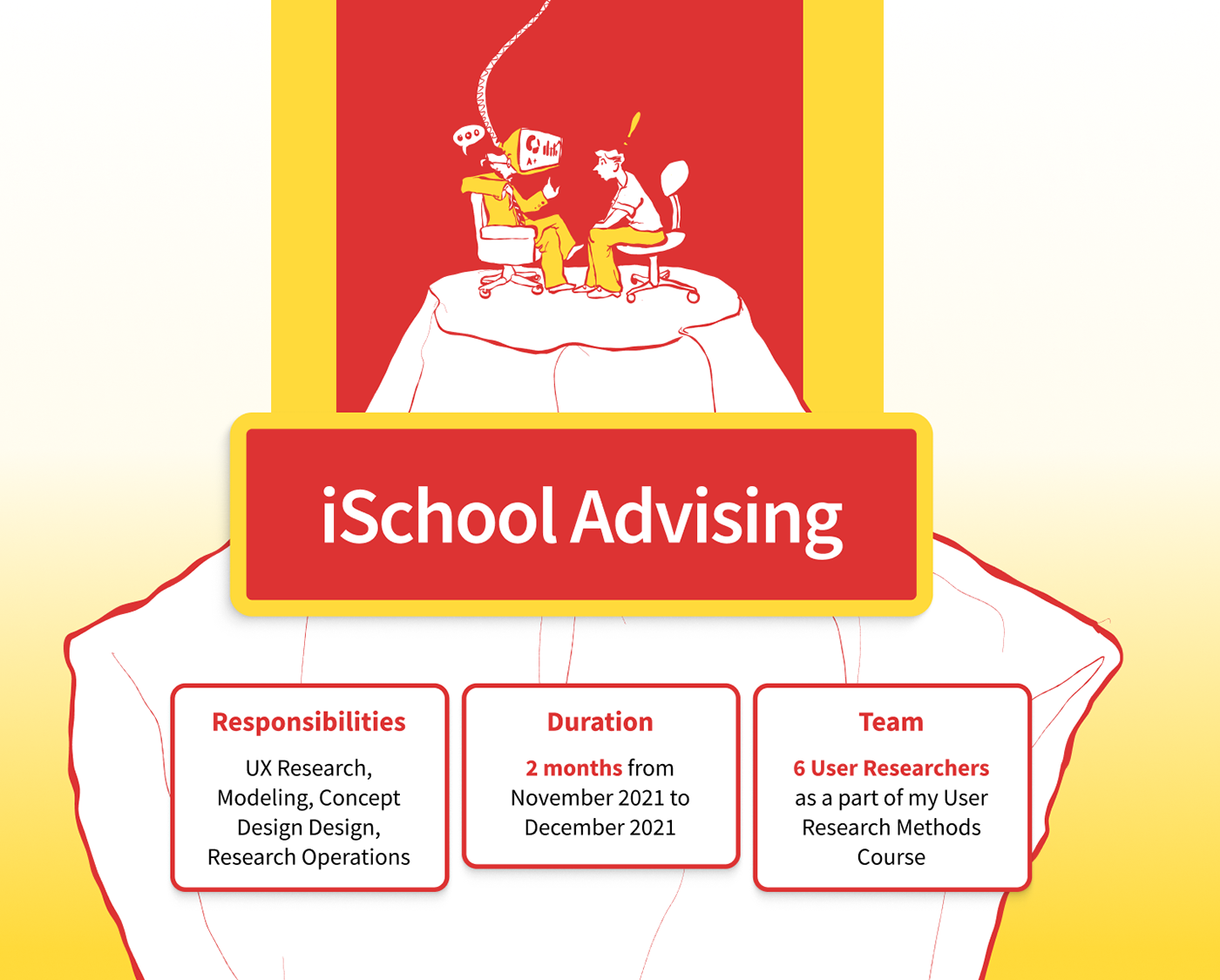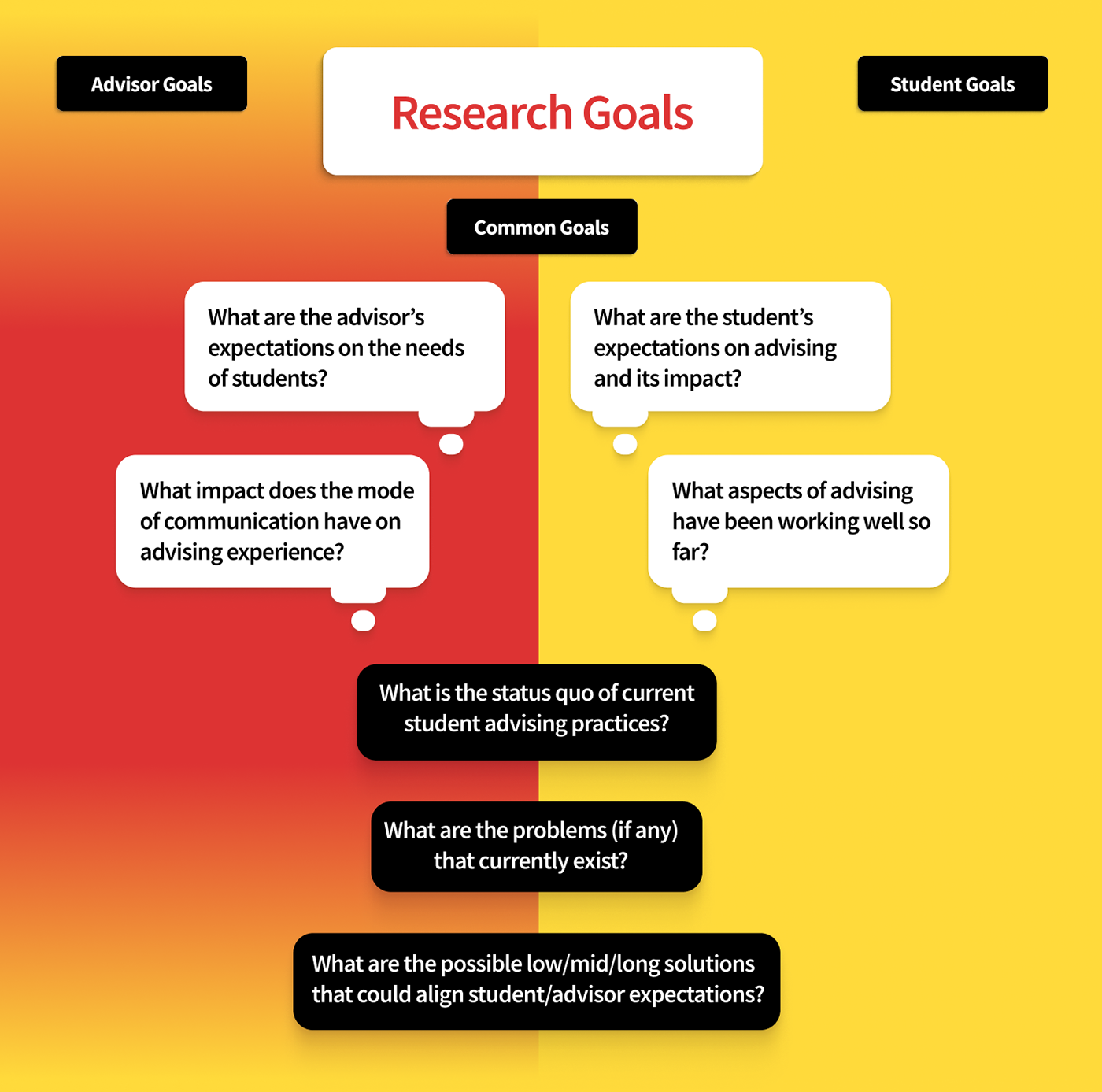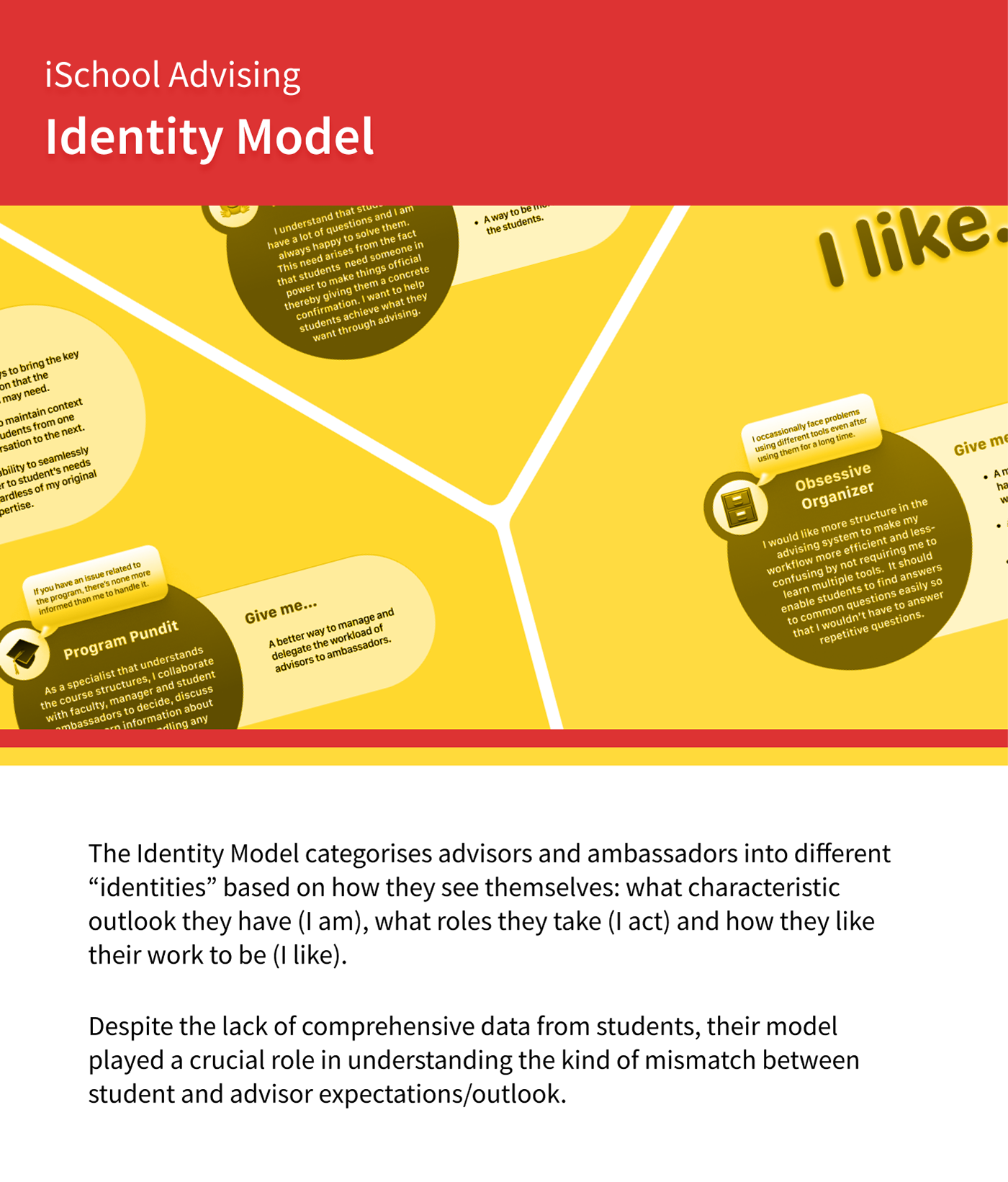
University of Maryland’s School of Information Science is a rapidly growing department. The number of students joining the Bachelor of Science in Information Science, the 4-year program, has steeply risen. This rapid growth and an anticipated addition of 3 more undergraduate programs have led to some interesting situations in the undergraduate iSchool advising committee – A growing team of academic advisors that help and guide all the undergrads of iSchool. The advisors hope to figure out solutions to improve their advising process.

Research Methodology
Diary Studies with advisors
We used Diary Studies to extract insights from advisors and use them as a formative tool for framing the Interview questions for the Contextual Inquiry phase. We were not allowed to participate in an advising session since it goes against the FERPA rules of student privacy. The best way to get the contextual data without being in the context, in this case, is diary studies since advisors could immediately note the pain points or peculiarities just after their advising session, preventing recall biases while promoting rich reflections. Although the method was solid on paper, we could only get a little information from diary studies since we got very few diary entries due to the busy Fall Intake Schedule.
Contextual Inquiry with advisors, ambassadors, supervisor
Contextual inquiries were conducted with advisors, ambassadors, and the supervisor, the main stakeholders in the advising process. This method enabled us to communicate with them during the interviews while observing them doing activities related to their workflow. We could capture not only their expectations but also their opinions, motives, and feelings.
Interviews with students
We conducted student interviews to understand what students expect from the advising process. The interview questions were based on insights from previous interviews with the advisors and our observations. Considering the students’ viewpoints enabled us to provide a holistic solution to the problems.
Recruitment criteria and process
When we intended to improve the advising experience, we had 2 target users in mind. Our primary users were the advisors, and the secondary users were the students. To get a good sample of the advisors, we picked advisors with varying experience levels and responsibilities. For selecting the students for the research, we focused on getting students who “freshly” started their advising sessions so that we could capture their raw experiences.
Analysis and synthesis process
After completing each interview with the advisors and the students, we held interpretation sessions within 24-48 hours of the interview completion time. This enabled us to revisit the interview and pick up on any points that the interviewer or the note-taker may have missed and also helped us to do a better analysis of the interview since we got insights from all the team members. The interpretation sessions ended with creating first-level (yellow) affinity notes for the interpreters for each interview.
Deliverables
In addition to affinity diagrams, we created Sequence Model, Information Flow Model, and Identity Model to elicit different perspectives and pain points of the advising process; apart from the models, we delivered solutions to improve advising workflow from short-term goals that can be readily implemented, to long-term goals that can be implemented in semesters or years length.















